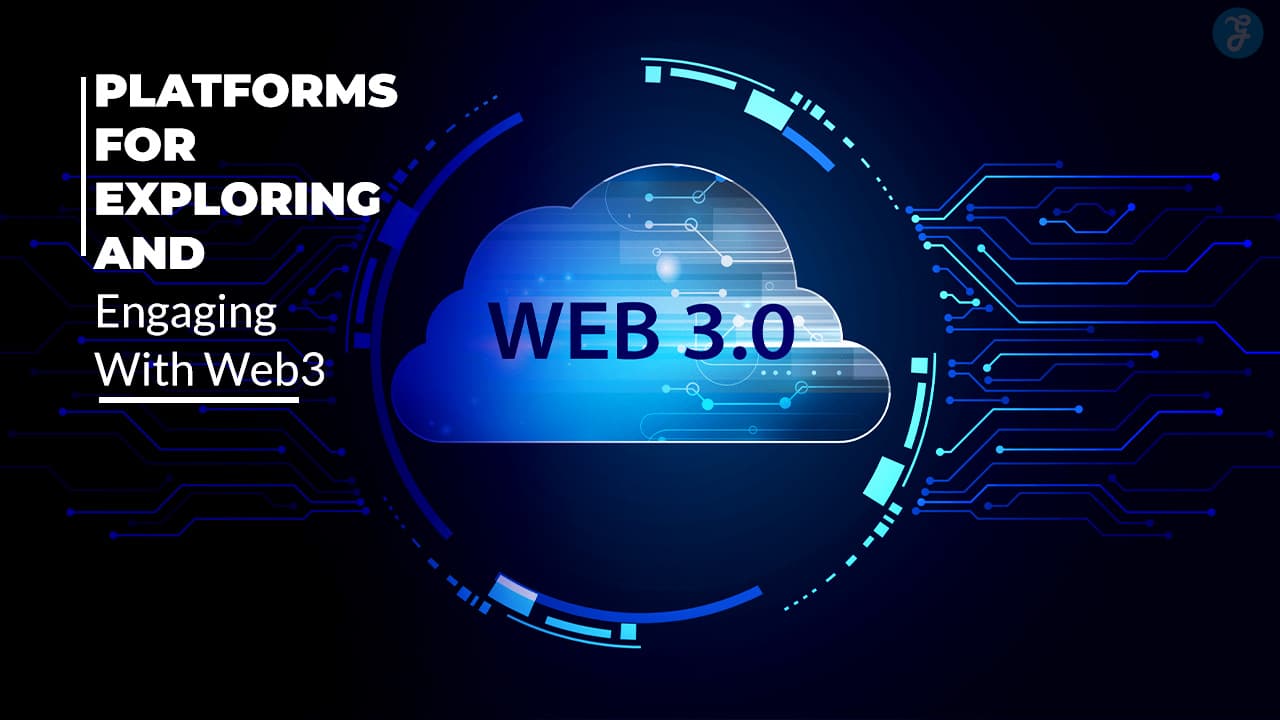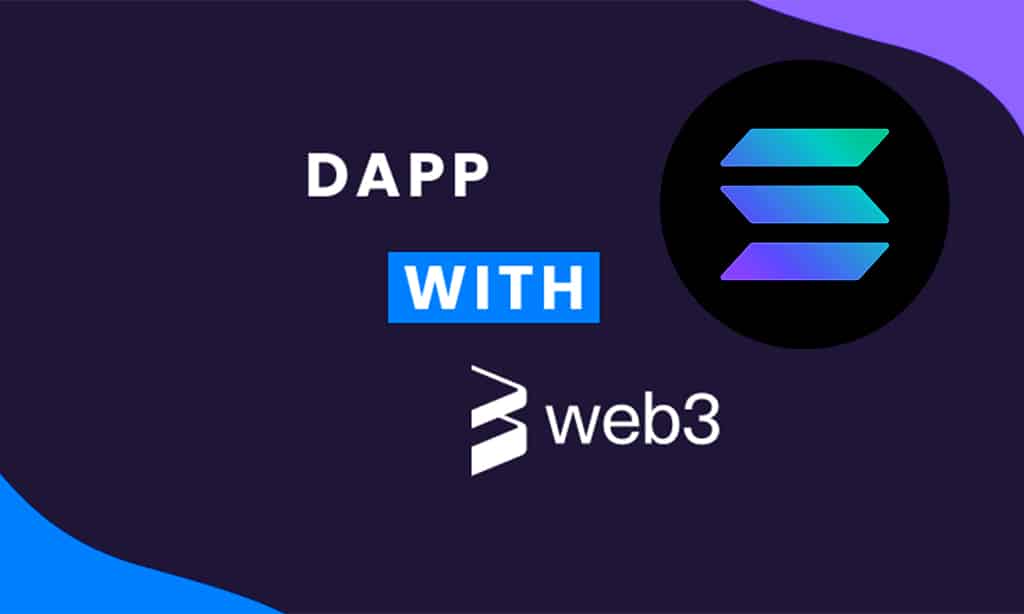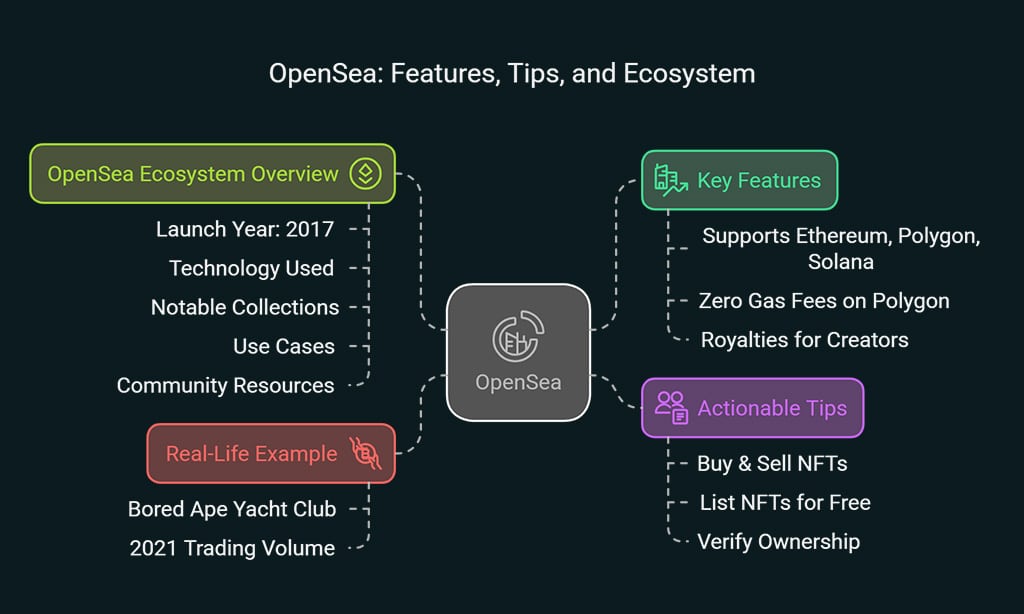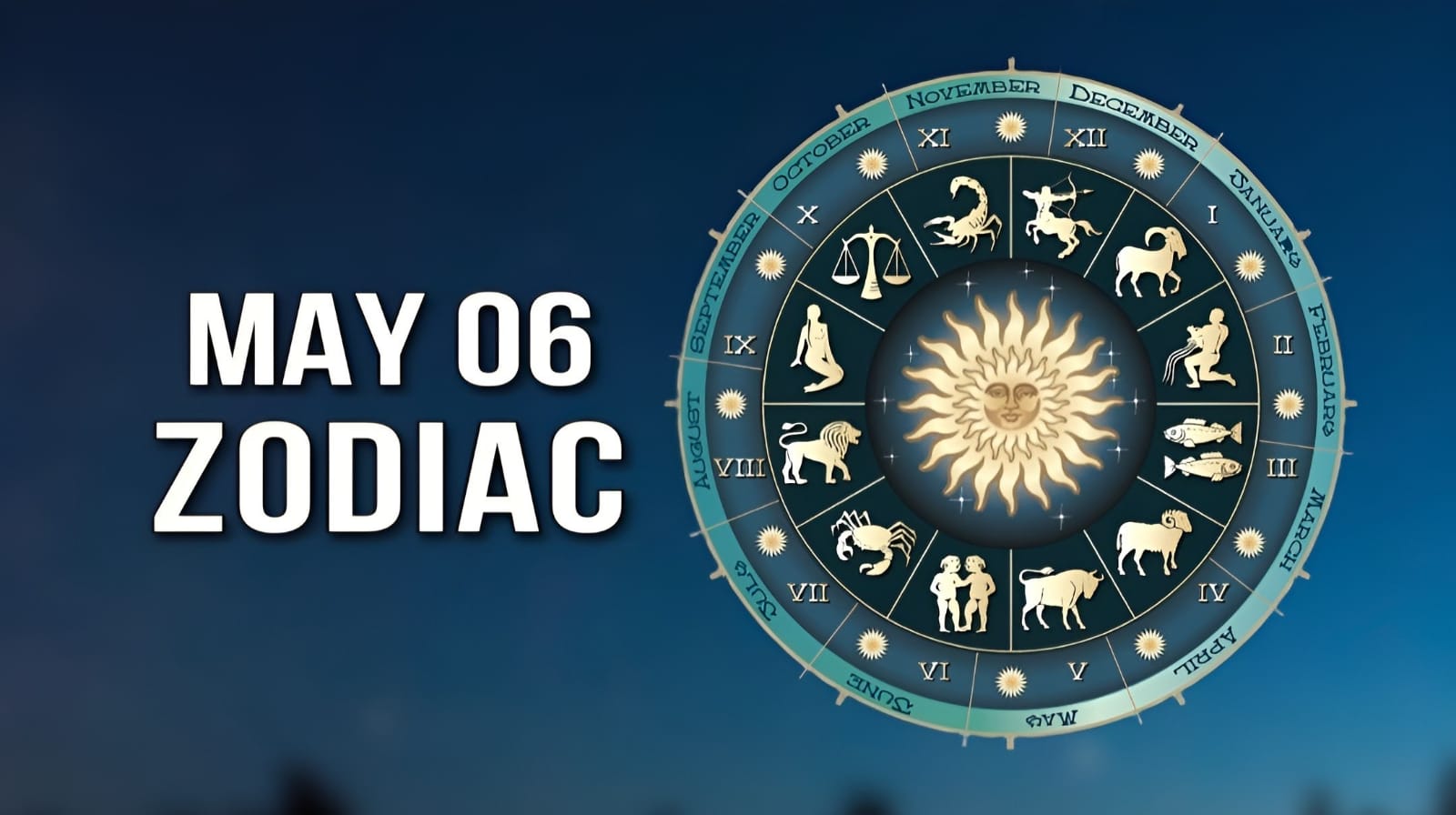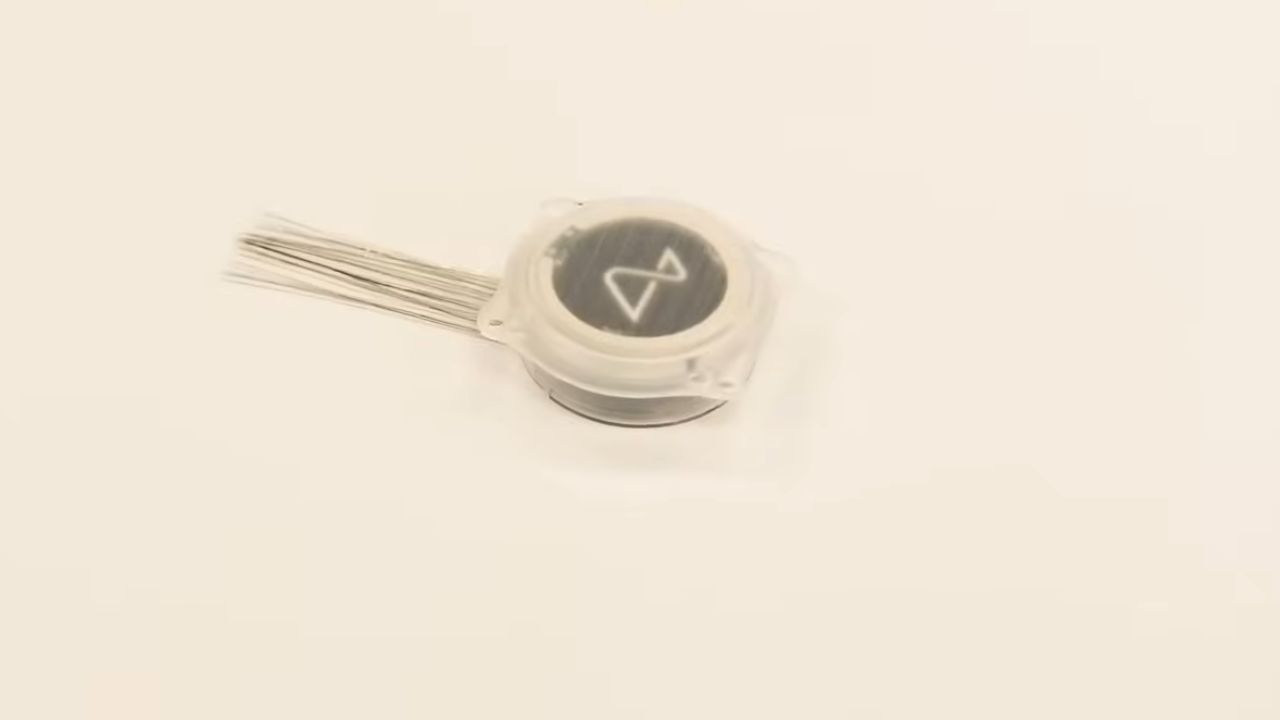Web3 represents the next evolution of the internet, emphasizing decentralization, user ownership, and enhanced security. Unlike the traditional Web2 model, where centralized entities control data and platforms, Web3 leverages blockchain technology to return control to users.
This shift is paving the way for innovative applications across various sectors, including finance, social media, and data storage.
In this article, we delve into 10 platforms for exploring and engaging with Web3, offering actionable insights, real-life examples, and practical tips to help you navigate this decentralized landscape.
1. Ethereum – The Foundation of Web3
Ethereum stands as a pioneering blockchain platform that introduced the concept of smart contracts, enabling developers to build decentralized applications (DApps) without intermediaries. Its robust ecosystem has made it the bedrock of numerous Web3 innovations.
Key Features:
- Smart Contracts: Self-executing contracts with terms directly written into code, facilitating trustless agreements.
- Decentralized Applications (DApps): Applications that run on a decentralized network, offering transparency and reduced censorship.
- ERC-20 and ERC-721 Tokens: Standards for fungible and non-fungible tokens, respectively, fostering the growth of cryptocurrencies and NFTs.
Actionable Tips:
- Explore DApps: Visit platforms like State of the DApps to discover and interact with a variety of decentralized applications built on Ethereum.
- Participate in DeFi: Engage with decentralized finance platforms such as Aave or Compound to lend or borrow assets without intermediaries.
- Mint NFTs: Create and trade non-fungible tokens on marketplaces like Rarible or Foundation.
Real-Life Example:
In 2020, the decentralized exchange Uniswap facilitated over $58 billion in trading volume, showcasing Ethereum’s capability to support large-scale financial applications without centralized control.
Ethereum Ecosystem Overview:
| Aspect | Details |
| Launch Year | 2015 |
| Consensus Mechanism | Proof of Stake (PoS) |
| Notable Projects | Uniswap (DeFi), OpenSea (NFT Marketplace), Decentraland (Virtual Reality) |
| Development Tools | Truffle Suite, Hardhat, Remix IDE |
| Community Resources | Ethereum Community Forum, EthHub, Ethereum Stack Exchange |
2. Polkadot – Cross-Chain Connectivity for Web3
Polkadot is designed to enable different blockchains to transfer messages and value in a trust-free fashion; sharing their unique features while pooling their security. This interoperability aims to create a fully decentralized and private web, controlled by its users, and to simplify the creation of new applications, institutions, and services.
Key Features:
- Parachains: Specialized blockchains running parallel to the main Polkadot relay chain, each optimized for specific use cases.
- Interoperability: Allows diverse blockchains to communicate and share information seamlessly.
- Shared Security: All parachains benefit from the security of the Polkadot relay chain, enhancing overall network robustness.
Actionable Tips:
- Explore Parachain Auctions: Participate in parachain slot auctions to support projects aiming to secure a spot on the Polkadot network.
- Stake DOT Tokens: Contribute to network security and earn rewards by staking Polkadot’s native token, DOT.
- Develop Cross-Chain DApps: Utilize the Substrate framework to build decentralized applications capable of interacting with multiple blockchains.
Real-Life Example:
The Acala Network operates as a DeFi hub on Polkadot, offering a suite of financial applications, including a multi-collateralized stablecoin and a decentralized exchange, demonstrating Polkadot’s capacity to host complex decentralized services.
Polkadot Ecosystem Overview:
| Aspect | Details |
| Launch Year | 2020 |
| Consensus Mechanism | Nominated Proof of Stake (NPoS) |
| Notable Projects | Acala (DeFi Hub), Moonbeam (Smart Contracts), Phala Network (Privacy) |
| Development Tools | Substrate, Polkadot JS API, Cumulus |
| Community Resources | Polkadot Community Forum, Polkadot Wiki, Polkadot Stack Exchange |
3. Solana – High-Speed Blockchain for Web3 DApps
Solana is a high-performance blockchain supporting builders around the world creating crypto apps that scale today. Its decentralized network is known for its speed and low fees, making it a preferred choice for developers aiming to build scalable Web3 applications.
Key Features:
- High Throughput: Capable of processing over 65,000 transactions per second (TPS), significantly outpacing many other blockchains.
- Low Transaction Fees: Average transaction costs are fractions of a cent, making micro-transactions feasible.
- Scalability: Designed to scale with Moore’s Law, ensuring increasing capacity as hardware capabilities improve.
3. Solana – High-Speed Blockchain for Web3 DApps
Solana is a high-performance blockchain designed for fast and low-cost transactions, making it ideal for NFTs, DeFi, and gaming applications. With transaction speeds of over 65,000 transactions per second (TPS) and near-zero gas fees, Solana has gained immense popularity among developers and users seeking scalability.
Key Features
- High throughput – Processes over 65,000 TPS, significantly faster than Ethereum.
- Minimal transaction fees – Costs less than $0.01 per transaction.
- Growing ecosystem – Supports popular NFT projects, DeFi apps, and blockchain games.
Actionable Tips
- Trade NFTs on Solana: Use platforms like Magic Eden to buy and sell Solana-based NFTs with lower gas fees.
- Earn with Solana Staking: Stake SOL tokens using Solana Beach to earn passive rewards.
- Develop Solana Apps: Use Rust and Anchor programming to build scalable DApps.
Real-Life Example
In 2022, Solana’s NFT ecosystem saw a massive rise, with over $1.5 billion in trading volume, proving its efficiency for digital asset marketplaces. Platforms like Stepn, a Web3 move-to-earn app, also gained significant traction on Solana due to its low fees.
Solana Ecosystem Overview
| Aspect | Details |
| Launch Year | 2020 |
| Consensus Mechanism | Proof of History (PoH) + Proof of Stake (PoS) |
| Notable Projects | Magic Eden (NFTs), Serum (DeFi), Star Atlas (Metaverse) |
| Development Tools | Rust, Anchor, Solana CLI |
| Community Resources | Solana Discord, Solana Docs |
4. IPFS – The Future of Decentralized Storage
The InterPlanetary File System (IPFS) is a peer-to-peer (P2P) storage network that offers permanent and tamper-proof data storage, making it an integral part of Web3. Unlike traditional cloud storage, IPFS distributes data across multiple nodes, ensuring reliability and censorship resistance.
Key Features
- Decentralized storage – No single entity controls stored data.
- Tamper-proof data sharing – Files cannot be altered once uploaded.
- Efficient content retrieval – Uses content-addressing instead of URL-based retrieval.
Actionable Tips
- Use IPFS for Websites: Host decentralized websites via IPFS gateways.
- Store NFTs Securely: Ensure long-term NFT metadata storage to prevent loss.
- Access via Brave Browser: Use Brave, a privacy-focused Web3 browser, to natively access IPFS links.
Real-Life Example
The New York Times and Wikipedia have experimented with IPFS for content archiving, ensuring that critical information remains permanently accessible.
IPFS Ecosystem Overview
| Aspect | Details |
| Launch Year | 2015 |
| Technology Used | Content-Addressed Storage, Merkle DAG |
| Use Cases | NFT metadata storage, censorship-resistant websites |
| Notable Platforms | Pinata, Filebase, Infura |
| Community Resources | IPFS Docs, IPFS Discord |
5. Arweave – Permanent Data Storage for Web3
Arweave offers permanent decentralized data storage with a unique one-time payment model, making it a game-changer for Web3 applications that require long-term file preservation.
Key Features
- Data stored permanently – Ideal for archival purposes and NFT metadata.
- One-time payment model – Unlike cloud storage, users pay once for lifetime storage.
- Backed by decentralized nodes – Ensuring high availability.
Actionable Tips
- Use Arweave for NFTs: Avoid losing metadata by storing NFTs on Arweave instead of centralized servers.
- Host Web3 Websites: Deploy censorship-resistant sites via Arweave’s Permaweb.
- Leverage SmartWeave: Build decentralized applications with Arweave’s smart contract framework.
Real-Life Example
Solana and Polygon-based NFTs are increasingly storing metadata on Arweave to ensure permanence and reduce dependency on centralized servers.
Arweave Ecosystem Overview
| Aspect | Details |
| Launch Year | 2018 |
| Technology Used | Proof of Access (PoA) Consensus |
| Notable Platforms | Permaweb, SmartWeave, ArDrive |
| Use Cases | Permanent NFT storage, Web3 archiving |
| Community Resources | Arweave Docs |
6. Uniswap – Decentralized Finance (DeFi) on Web3
Uniswap is a decentralized exchange (DEX) built on Ethereum, allowing users to swap tokens without intermediaries. It utilizes Automated Market Maker (AMM) technology to enable instant trading and liquidity provision.
Key Features
- No middlemen – Fully decentralized and permissionless.
- Liquidity pools for passive income – Users can earn by providing liquidity.
- Supports a wide range of ERC-20 tokens.
Actionable Tips
- Earn via Liquidity Pools: Deposit tokens to earn a share of transaction fees.
- Swap tokens easily: Trade ERC-20 tokens without sign-ups.
- Participate in Governance: Hold UNI tokens to vote on protocol upgrades.
Real-Life Example
Uniswap processed $1 trillion in lifetime trading volume by 2022, making it one of the most significant decentralized exchanges.
Uniswap Ecosystem Overview
| Aspect | Details |
| Launch Year | 2018 |
| Technology Used | AMM, Ethereum Smart Contracts |
| Notable Platforms | Uniswap V3, Arbitrum, Optimism |
| Use Cases | DeFi trading, Yield farming |
| Community Resources | Uniswap Docs |
7. OpenSea – The Leading NFT Marketplace in Web3
OpenSea is the world’s largest NFT marketplace, offering a platform to buy, sell, and trade digital collectibles across multiple blockchains.
Key Features
- Supports Ethereum, Polygon, and Solana NFTs.
- Zero gas fees on Polygon transactions.
- Royalties for creators – Artists earn a percentage on resales.
Actionable Tips
- Buy & Sell NFTs: Use OpenSea to collect and trade digital art and assets.
- List NFTs for Free: Sell NFTs without gas fees on Polygon.
- Verify Ownership: Use wallet connection for authenticity.
Real-Life Example
In 2021, Bored Ape Yacht Club NFTs gained mainstream popularity, with OpenSea processing over $13 billion in trading volume for digital collectibles.
OpenSea Ecosystem Overview
| Aspect | Details |
| Launch Year | 2017 |
| Technology Used | Ethereum, Polygon, Solana |
| Notable Collections | Bored Ape Yacht Club, CryptoPunks |
| Use Cases | NFT trading, digital ownership |
| Community Resources | OpenSea Help Center |
8. Lens Protocol – Decentralized Social Media for Web3
Traditional social media platforms control user data, monetize content without fair compensation, and can censor users. Lens Protocol is changing this by offering a Web3-native, decentralized social networking ecosystem where users own their content and digital identity.
Key Features
- User-owned social identity – Your profile is stored on the blockchain.
- Decentralized content storage – No single entity can censor posts.
- Monetization for creators – Earn from engagement and tokenized rewards.
Actionable Tips
- Create a Lens Profile: Register on Lens Protocol and build your decentralized identity.
- Engage with DApps: Use Lens-powered apps like Lenster (a Web3 Twitter alternative) to interact and earn rewards.
- Monetize Content: Creators can tokenize their posts and earn from interactions.
Real-Life Example
Lens Protocol has enabled thousands of users to own and control their social media profiles while monetizing content without relying on advertising revenue from centralized platforms.
Lens Protocol Ecosystem Overview
| Aspect | Details |
| Launch Year | 2022 |
| Technology Used | Polygon Blockchain |
| Notable Platforms | Lenster, LensTube, Orb, Phaver |
| Use Cases | Decentralized social networking, content monetization |
| Community Resources | Lens Discord |
9. Decentraland – Virtual Reality in Web3
Decentraland is a metaverse platform where users can buy virtual land, build experiences, and engage with Web3 applications. Built on Ethereum, Decentraland is one of the most popular virtual worlds, offering endless opportunities for creators, gamers, and businesses.
Key Features
- Virtual land ownership – Buy, sell, and trade digital real estate as NFTs.
- Metaverse events – Attend virtual concerts, conferences, and exhibitions.
- Game development – Create interactive experiences using Decentraland’s SDK.
Actionable Tips
- Buy Virtual Land: Purchase LAND NFTs via OpenSea to own a piece of Decentraland.
- Attend Events: Explore conferences, meetups, and even fashion shows hosted in the metaverse.
- Create & Monetize: Developers can build and monetize immersive virtual experiences.
Real-Life Example
Decentraland hosted the first-ever Metaverse Fashion Week in 2022, featuring brands like Dolce & Gabbana and Tommy Hilfiger, proving that Web3 is shaping the future of fashion and commerce.
Decentraland Ecosystem Overview
| Aspect | Details |
| Launch Year | 2017 |
| Technology Used | Ethereum Smart Contracts |
| Notable Experiences | Virtual casinos, NFT galleries, live events |
| Use Cases | Virtual real estate, gaming, metaverse commerce |
| Community Resources | Decentraland Docs |
10. Filecoin – Revolutionizing Web3 Cloud Storage
Filecoin is a decentralized cloud storage network where users can rent out or buy secure, blockchain-based storage space. Unlike centralized services like Google Drive or AWS, Filecoin ensures privacy, censorship resistance, and cost efficiency.
Key Features
- Decentralized data storage – No single point of failure.
- Earn by renting storage – Users can offer storage and get paid in FIL tokens.
- Cost-effective – Lower fees than traditional cloud providers.
Actionable Tips
- Store Web3 Data: Use Filecoin to store NFT metadata, DApp files, and decentralized websites.
- Earn by Providing Storage: Rent out your extra hard drive space and earn FIL tokens.
- Use Filecoin with IPFS: Combine IPFS and Filecoin for enhanced decentralized storage.
Real-Life Example
The Starling Lab for Digital Preservation partnered with Filecoin to store and protect historical records, including Holocaust testimonies and news archives, ensuring they remain accessible forever.
Filecoin Ecosystem Overview
| Aspect | Details |
| Launch Year | 2020 |
| Technology Used | Proof of Replication (PoRep) & Proof of Spacetime (PoSt) |
| Notable Integrations | IPFS, Arweave, Textile |
| Use Cases | Decentralized storage, long-term data preservation |
| Community Resources | Filecoin Docs |
How to Choose the Right Web3 Platform for Your Needs?
With so many platforms available, choosing the right Web3 service depends on your goals.
| Use Case | Best Web3 Platform |
| Decentralized Finance (DeFi) | Uniswap, Polkadot, Ethereum |
| NFTs & Digital Collectibles | OpenSea, Solana, Arweave |
| Metaverse & Virtual Land | Decentraland, Ethereum, Lens Protocol |
| Decentralized Storage | IPFS, Filecoin, Arweave |
| Cross-Chain Interoperability | Polkadot, Ethereum, Solana |
Security & Privacy Tips in Web3
- Use a Hardware Wallet: Secure your crypto assets with Ledger or Trezor.
- Enable Multi-Factor Authentication (MFA): Add an extra security layer.
- Verify Smart Contracts: Check contract addresses before making transactions.
- Beware of Phishing Attacks: Avoid clicking on unknown links in Web3 communities.
Wrap Up
The Web3 revolution is reshaping industries, offering new opportunities in finance, social media, gaming, and data storage. These 10 platforms for exploring and engaging with Web3 provide the perfect gateway for individuals and businesses looking to embrace decentralization.
Next Steps to Get Started with Web3
- Choose a Web3 Wallet: Use MetaMask, Phantom, or Ledger to interact securely.
- Start Small with DeFi & NFTs: Experiment with Uniswap and OpenSea.
- Explore Web3 Storage Solutions: Store data securely with Filecoin or IPFS.
- Stay Informed: Follow Web3 updates from CoinDesk, Decrypt, and Ethereum blogs.
Now is the perfect time to explore and engage with Web3! Let me know if you need help getting started!


